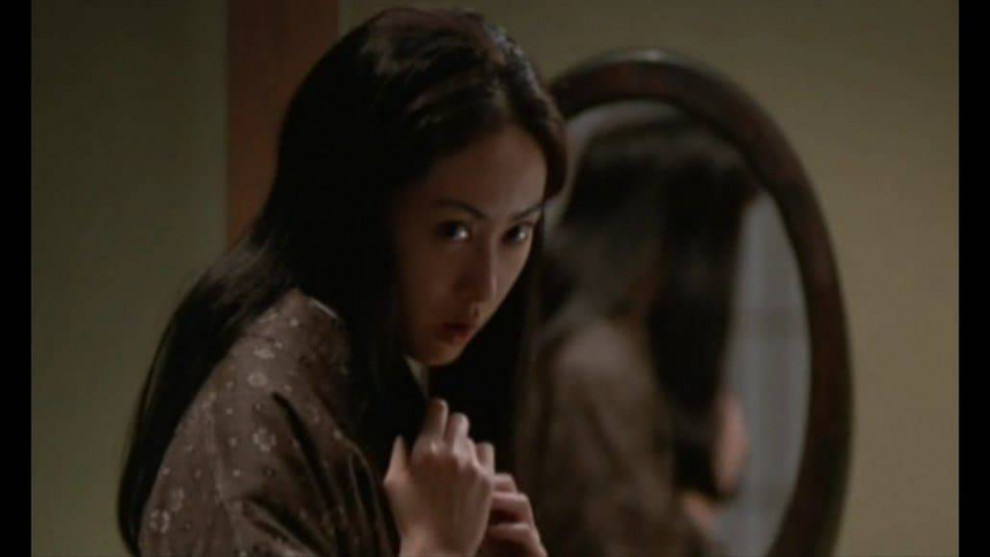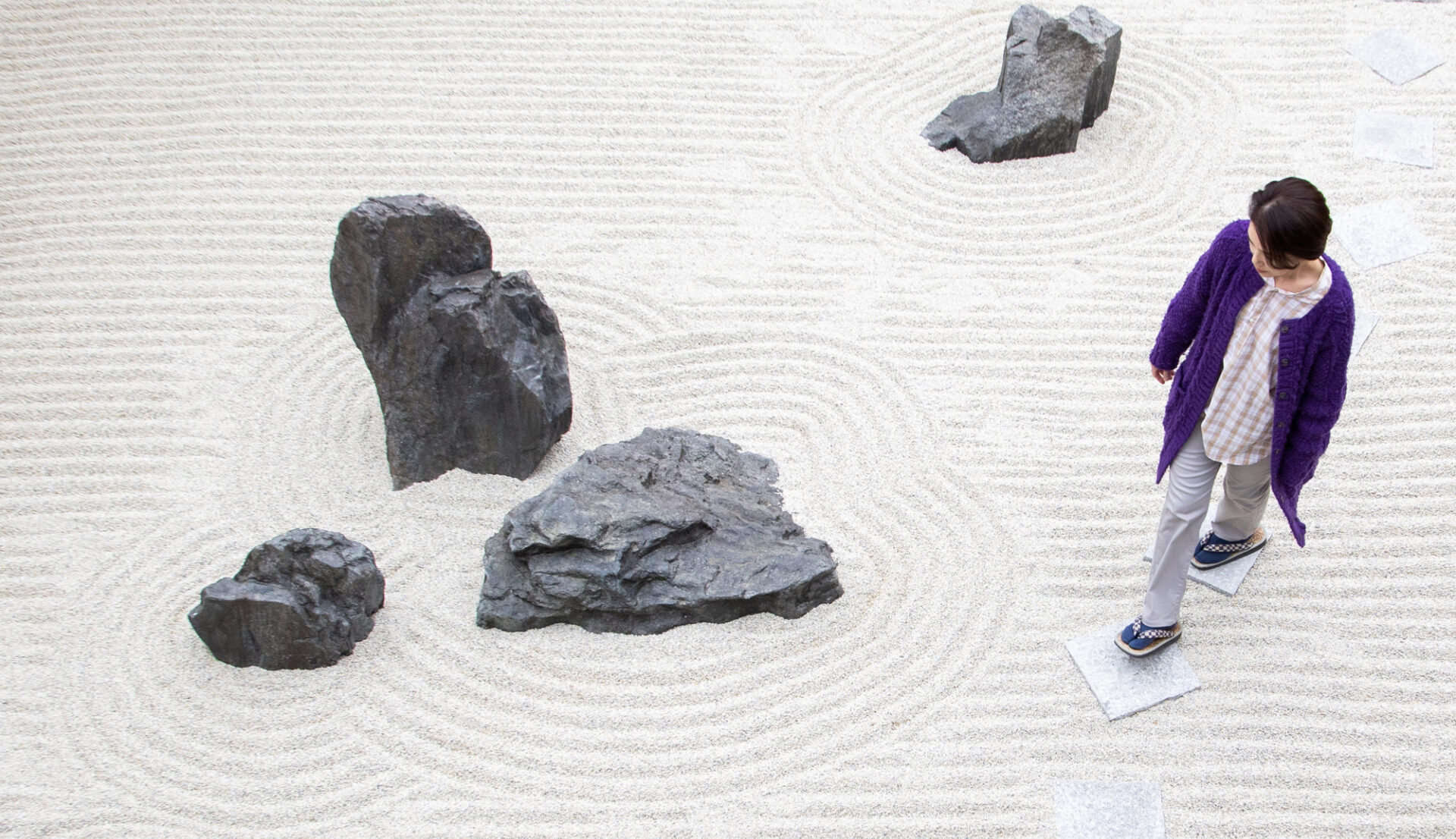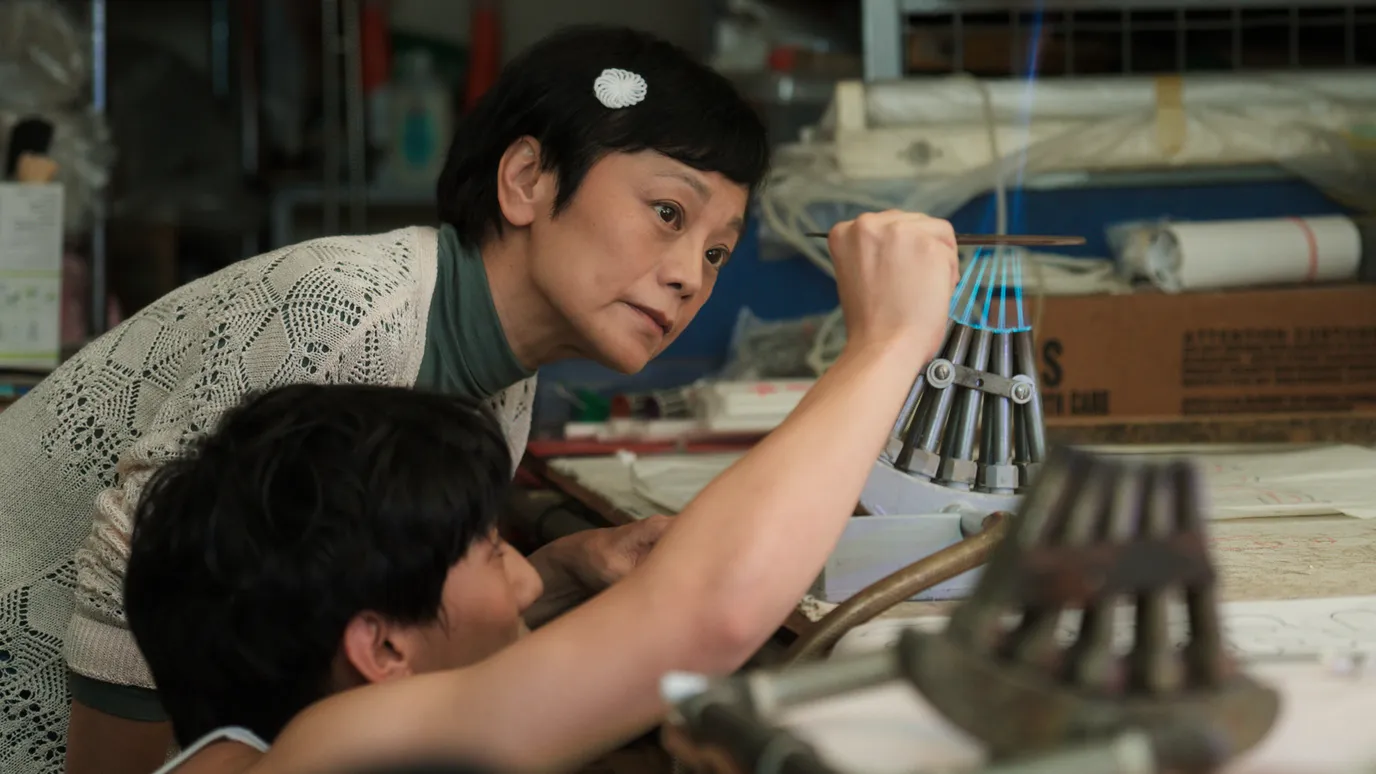“Why were you the only one saved?”
Although this might sound like an exaggeration, but the way, especially Western audiences view Japanese, or indeed Asian horror fundamentally changed with Hideo Nakata's “Ring” (1998). For a director who states he does not even like the genre that much, it must have been quite the surprise to suddenly be one of the first to start a wave of Japanese horror movies. Interestingly, films like “Ring”, “Ju-On” or “Pulse” may contain a fair share of outside influences, but overall their tone, their visuals and their general approach to the uncanny can be defined as distinctly Asian, or Japanese. It is precisely this kind of authenticity which labelled titles like the ones mentioned to be prime candidates for Hollywood-ized remakes, but also helped the works of many directors to find international distributors.
In the case of “Ring 2”, one of the first surprises for many may just be the fact it is not the first sequel to the original film. Originally “Rasen” directed by Joji Iida (“Tokyo Babylon 1999”) was supposed to be the “true” sequel. Made in the same year as Nakata's first “Ring”-film. Both features were screened at a double bill upon their Japanese release, but eventually “Ring” proved to be the more successful film financially and critically. In an interview with Offscreen.com, director Hideo Nakata explains how he had been approached to also direct the “new” sequel to his film, this time diverting from the narrative foundation by Koji Suzuki. Considering some of the themes of the first film, “Ring 2” should emphasize the connection between the will and the mind, as well as the television set as channels for Sadako to enter our world, but also to spread her deadly curse.
The story takes place only weeks after the events of the first film. After the body of Sadako has been identified by her next of kin, her uncle Takashi (Yoichi Numata), there are still many open questions for the police. At the same time, the mysterious death of Ryuji Takayama (Hiroyuki Sanada) and the disappearance Reiko Asakawa (Nanako Matsushima) as well as her son have got the attention of the police, especially Detective Omuta (Kenjiro Ishimaru).
Buy This Title

Meanwhile Ryuji's assistant, Mai Takano (Miki Nakatani) and Reiko's colleague Okazaki (Yurei Yanagi) have started a search for answers on their own, following the rumors about the cursed VHS-tape. Upon their research, they come upon the case of Masami Kurahashi (Hitomi Sato), a girl who once encountered Sadako and has been in a mental asylum ever since. Somehow this encounter has left a mark with the girl, in the way she can influence the world and those around her. She may be the key to finally understand Sadako's curse, but also a way to help Reiko and her son Yoichi (Rikiya Otaka), whose encounter with Sadako has had similar effects on him.
If “Ring” is a film about the outbreak of a disease, then its successor is in many ways, a film about the repercussions of that event and about finding a possible cure. With that being said, “Ring 2” is an interesting sequel for it does not rely on horror so much, but on expanding the background of Sadako and her curse. In terms of tone, “Ring 2” diverts even further from being a “typical” horror film as it is more interested in presenting Sadako as some kind of modern Frankenstein, asking questions about the true monsters who have turned her into what she is and therefore have actually helped manifesting the curse or disease which is about to get out of control.

While “Rasen” may have been the “true” sequel to the first film, especially given the fact it is based on the novel by Koji Suzuki, who also wrote the first “Ring”-novel, “Ring 2” is nevertheless faithful in the way its elaborates on the original's themes. According to Nakata, these films are truly about loneliness and what it does to people. As he tells the Estonian Postimees, especially in our time, technology and urbanization have helped in making the gap between people at times even wider, thus creating spaces for ghosts to appear. The image of the well and the tube (as the television is often called) are metaphors of a mind caged within an inescapable state of loneliness, with the latter being a gateway to access the reality of others. Since these conditions have transformed the human, consequently, Sadako has changed into a hateful spirit. Logically those experiencing loneliness the most – Yoichi and Masami – become more susceptible hosts for her curse.
If we think of loneliness as the true curse or disease, this may offer an interesting reading to some of the events and visuals in the second film. Hiroshi Takahashi's script highlights how the curse dissolves social bonds, with Mai perhaps being the only exception in that regard. Takashi and Ozaki, for example, follow selfish interests and their fear, leading to disastrous consequences for themselves and their environment. Those most directly affected by the curse are doomed to a life (or rather a week) of solitude with their contacts to the outside world slowly dissipating. Tragically, these victims are either children (Yoichi) or teenagers (Masami), characters who have just started their lives and who are now driven into isolation, into a (wet) grave, just like Sadako herself.

Technically, “Ring 2” follows the pattern of its predecessor. Its wonderfully creepy sound design and the images by Hideo Yamamoto further define the kind of world and tone of the film. Considering that the curse affects homes and emotions, spaces are usually presented as claustrophobic, entities already affected by Sadako's influence. Since this is a film about finding a cure, the antiseptic atmosphere of medicine and science, as it presented here, supports the kind of distance created by the disease. Mirrors and water, as with the original, are the natural connectors to the hereafter, or in this case, to the vengeful spirit in search for a new host.
In the end, for those looking primarily for scares “Ring 2” will likely be a bit of a disappointment, but for those looking for a more thorough backstory and foundation of the themes and characters of the first movie, this is a truly great sequel. What “Ring 2” does best in terms of being a sequel is that it does not just feel like something extra is given to a story, but that something quite essential has been added to this already intriguing story. With regards to performances, visuals and sound design this looks, feels and sounds like the sequel Hideo Nakata's “Ring” deserves, one handled with care, patience and a true passion for the themes it wants to talk about.
Sources:
1) Totaro, Donato (2000) The „Ring“ Master: Interview with Hideo Nakata
offscreen.com/view/hideo_nakata, last accessed on: 01/02/2019
2) thering.wikia.com/wiki/Ring_2, last accessed on: 01/02/2019
3) Tuumalu, Tiit (2013) Hideo Nakata: horror movie maker by chance
news.postimees.ee/1214754/hideo-nakata-horror-movie-maker-by-chance, last accessed on: 01/02/2019
4) Mes, Tom; Sharp, Jesper (2005) The Midnight Eye Guide to New Japanese Film. Berkeley (Cal.): Stone Bridge Press















